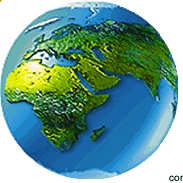The Great Divergence
Kenneth Pomeranz
China, Europe, and the Making of the Modern World Economy.
"There are signs that Indian income distribution was significantly more unequal (and so popular consumption more limited) than it was in China, Japan, or western Europe. A study of Mogul land taxes for 1647 finds that 445 families received 61.5 percent of all revenues, which were about 50 percent of gross agricultural output, and that roughly one-quarter of the revenue flow to those families represented actually personal income."
p. 146.
"If this is accurate these 445 families–presumably less than .002 percent of the population–would have received an income from their offices alone equal to 7.5 percent of the total agricultural output, or perhaps 6 percent of the society's total income!"
pp. 146-147.
". . . suggests a rather narrow market for such a vast empire"
"It is risky to stake too much on the comparison of any one good or on the amount of income going to a small elite."
p. 147.
"Thus, even if Indian 'luxury' and 'fashion' resembled Japanese, western European, and Chinese development more closely, . . . its social relations and labor systems probably ensured that such impulses affected a much smaller proportion of the population.
Rural Indian production
"Growing numbers of rural Indians were producing cash crops or crafts, but these were often extracted from them directly. Thus an increase in the production of commodities need not entail an increase in the peasants participation in the market; indeed, the brisk market in rights to extract various peasant dues and goods coercively ultimately depend on those rights–which preempted the peasants' own participation in the market–remaining enforceable."
Ibid.
"To be sure, recent research shows that in addition to aristocrats, Indian towns and cities from the fifteenth through the eighteenth centuries featured growing numbers of clerks, small to medium sized merchants, and others who often purchased non-necessities."
p. 148.
Backgrounds
"Capitalism as a commercial activity was universal in the Indian Ocean."
K. N. Chaudhuri, 1985 pp. 210, 214. cited in Pomeranz p. 169.
"Sanjay Subrahmanyam found even stronger evidence of the interpenetration of capital-accumulating families and commercialized public finance in south India. Subrahmanyam traces the careers of what he calls 'portfolio-capitalists':men who combined an ever-shifting mix of interests in long-distance trade; loans, bill-forwarding, and other financial activities; the purchase or leasing of tax rights and government monopolies; capital intensive land reclamation . . . ."
p. 175.
More recently, Subrahmanyam has generalized from south India to much of what he call 'early modern Asia,' arguing that two particularly large and important groups of 'portfolio capitalists fanned out across the enormous littoral of the Indian Ocean and its adjacent seas."
p. 175.
"Take, for instance, Bengal– which had close to 20,000,000 people before the horrendous 1770 famine, was more populous than any European state besides Russia or France."
p. 176.
As if by nature, we are encouraged to think that markets are a force that cannot be subverted, but Pomeranz evidence and Pacey's accounts of British suppression of Indian crafts both reveal that the concept is far more complicated, subtle and arguable.

